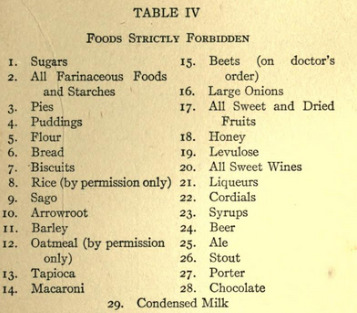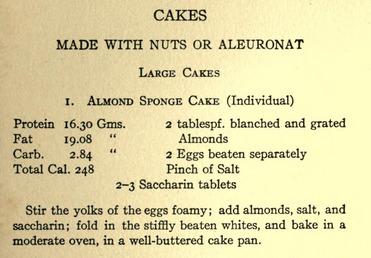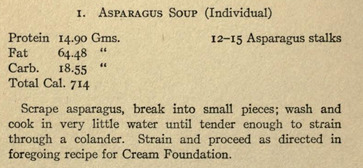#aleuronat
Explore tagged Tumblr posts
Text
Writing Notes: Divination (pt. 1)

It seems humans have for a very long time been troubled by the opacity of the future. They'd like to have a better sense of what lies ahead, and they've come up with some ingenious ways of trying to get at that information, each of which has a name. The suffix -mancy means "divination."
Divination - the art or practice that seeks to foresee or foretell future events, or to discover hidden knowledge. It usually involves the interpretation of omens or, if you're really lucky, the assistance of supernatural powers.
Aeromancy
Divination from the state of the air or from atmospheric substances.
Requires that you keep your eyes on the skies.
You'll have to watch for clouds, birds, precipitation, etc.
This word doubles as a fancy word for weather forecasting.
Aleuromancy
Divination by means of flour.
You dabble in a little aleuromancy every time you crack open the fortune cookie that arrives with your lo mein.
In earlier practices, messages were baked into little balls of dough.
Aleuro - means "flour," naturally, but it's only used in technical words like aleuronat, which refers to a flour with a high gluten content.
Anthropomancy
Divination from the entrails of a human being.
Horrifyingly, anthropomancy is widely reported to have been practiced by a great many of the ancient peoples of the world.
Anthropo comes, via Latin, from the Greek anthrōpos, meaning "human being."
Astragalomancy
Divination by means of small bones or dice.
In early astragalomancy, small bones with marks carved into them were thrown and their positions used to predict the future.
The Latin word astragalus comes from the Greek astragalos, meaning both "neck vertebra" and "molding." The word astragal can in modern English refer to a narrow half-round molding or to a projecting strip on the edge of a folding door.
Axinomancy
Divination by means of the movements of an ax placed on a post.
An ax will only balance on a post for so long.
When it moves, according to axinomancy, its motions offer insight into who is guilty and who is not.
At the word's root is the Greek axinē, meaning "axhead" or "ax."
Belomancy
Divination by drawing arrows at random from a container.
The arrows most often used in belomancy have messages written on them.
The belo- part of this word comes from the Greek bélos, meaning "missile, dart, arrow." Bélos itself comes from ballein, meaning "to throw"—a root of such varied words as problem, hyperbole, parable, and devil.
Bibliomancy
Divination by books, especially the Bible.
You can open any book to a random page and decide that the first thing your eyes land on is a message that pertains to your future: instant bibliomancy.
It is especially practiced with sacred books, such as the Bible.
Cartomancy
Fortune-telling by means of playing cards.
In the 18th century, young women would apparently use cartomancy to learn the details of their own nuptials—including whom their future husband would be.
The cart in cartomancy of course means "card," and as the modern phrase tells us, if it's in the cards, it's inevitable.
Catoptromancy
Divination by a mirror or by crystal gazing.
Catoptromancy is a broad term of divination.
If you want to be specific, use enoptromancy for the mirror divination, like that employed by the wicked queen in the story of Snow White, and crystallomancy for the ball of rock crystal that the Wicked Witch of the West uses.
Employing crystallomancy is also referred to as "scrying." The likely root of the first part of catoptromancy is Greek katoptron, meaning "mirror."
Ceromancy
Divination from figures formed by melted wax in water.
Melted wax takes on interesting forms, and when you pour the melted wax into water the forms solidify and you can tell the future.
If these writing notes helped with your poem/story, please tag me. Or send me a link. I'd love to read them!
part 2 ⚜ part 3 ⚜ More: Word Lists
#writing prompt#writeblr#writers on tumblr#spilled ink#witchblr#poets on tumblr#art#literature#poetry#words#john collier#writing reference#divination
39 notes
·
View notes
Text




[Found an old cook book meant for us before artificial insulin was invented.]
On archive.org: Diabetic Cookery: Recipes and Menus by Rebecca Oppenheimer (1917)
I looked into it out of curiosity, and it seems that the Aleuronat was a very low carb "flour" made from wheat gluten. (Some other recipes call for another flour substitute evidently made from casein, going by the name.)
Given the frequent overlap between autoimmune types of diabetes and also autoimmune celiac disease? *raises hand* (Which they knew even less about than the diabetes then.) That gluten "flour" sounds like a wonderful, greatly medically advisable plan! 😵
Very interesting cookbook to leaf through, overall. And sobering, maybe especially as someone who was only recently started on appropriate insulin treatment after nearly dying.
From comments:


Side story: One of my great aunts was extremely lucky. She was born the year insulin was patented and put into production, and then diagnosed with T1 diabetes as a child.
Treatments (and monitoring!) have almost unbelievably improved over her lifetime, not to mention during the 25 years since. Alongside medical understanding of the condition in general. There weren't even home glucose meters for most of Polly's diabetic life.
Managing the condition was a totally different--and extremely difficult and dangerous!--proposition over much of that time, with the knowledge and technology available. The situation had improved greatly by the time I knew her, but before better monitoring was a thing? It was apparently hard to count the number of times hypoglycemia and DKA had landed her in the hospital in over the years. Multiple multiple diabetic comas, from various causes.
But, Polly still made it into her early 70s, which was an impressive feat for a childhood-onset diabetic of her generation. And which earned a number of half-joking (and too relatable!) comments from family about her just being too stubborn to die before that.
Not the 2-5 years tops expected lifespan when that cookbook was published, often less for children.
Also? During most of her lifetime, insulin was still deliberately being kept affordable, even in the US. It was a cheap treatment until very recently, and still is in a lot of the rest of the world.
A medical professor who has tracked the cost of insulin over the years says that a one-month supply of a popular version that cost $45 wholesale in 2001 cost $1,447 14 years later, an increase of almost 3,000%. That’s the wholesale price, not the retail price that an uninsured patient would pay.
As things stand with the price gouging on lifesaving medication? I could unfortunately see some people being desperate enough to try a similar dietary harm reduction approach now. No doubt some people are doing that, for lack of access to appropriate treatment.
#diabetes#t1 diabetes#vintage cookbook#1917#diabetic cookery: recipes and menus#medical history#insulin#celiac#autoimmune bs#autoimmune#death mention#the family curse
2 notes
·
View notes
Text
Un panadero revive un libro de cocina para diabéticos de 1917 (algo así como …)
¿Qué pensarías si te presentara una de mis recetas, pero te diera muy pocas instrucciones sobre cómo prepararla? Digamos que te acabo de dar la lista de ingredientes y te dije que deberías juntarlos y meterlos en el horno. ¿O si ni siquiera estaba particularmente claro sobre la lista de ingredientes, cuando mencioné el uso de huevos separados, pero en realidad solo quise decir que solo debes usar las claras de huevo? ¿Y si ni siquiera te dijera la temperatura del horno a la que horneo el artículo? Tomaré un trago salvaje aquí y diré que no pensaría mucho en mí como redactor de recetas. De hecho, probablemente nunca volverías a visitar mi blog de comida. Sé que a veces cometo un error tipográfico o me olvido de dar un paso en las instrucciones. Pero al final, trato de escribir mis recetas como quiero leerlas: claro, conciso y cuidado.
Imagínese por un segundo que fue trasladado al mundo kármico de Earl. Permítanme darles algunos antecedentes aquí. Mi amiga, Jessica Apple, editora de A Sweet Life Diabetes Magazine, se encontró con un viejo libro de azúcar y pensó que sería un buen material para la historia. Y por viejo libro de cocina me refiero a muy viejo. Como está escrito hace casi 100 años. Galleta diabética, de Rebecca W. Oppenheimer, fue publicado en 1917, en un momento en que tales libros de cocina no existían realmente para diabéticos que necesitaban restricción de carbohidratos. De hecho, el prefacio comienza así: «La autora se sentiría diferente al publicar un libro de cocina si ya hubiera tantos otros excelentes, si no fuera por el hecho de que se trataba de un campo en particular».
Es importante señalar que el libro de Oppenheimer se publicó cinco años antes del descubrimiento de la insulina en 1922, en un momento en que los diabéticos tipo 1 estaban muriendo rápidamente a causa de la enfermedad y los diabéticos tipo 2 no eran muy dignos de confianza para el tratamiento. Centrándose en los alimentos que los diabéticos podían consumir sin sobrecargar sus preciadas células beta, hizo que el libro de cocina para diabéticos de Oppenheimer fuera algo revolucionario.
Estaba jugando para el desafío de probar algunas de estas viejas recetas, y Jess y yo mantuvimos correspondencia sobre algunos de los ingredientes divertidos y engañosos. Parece que incluso en los días de Oppenheimer, la harina de almendras era un ingrediente estándar para reducir los carbohidratos en muchos dulces y productos horneados, por lo que me presentaron allí. Pero estaba bastante seguro de que no podría conseguir la harina de aleuronat o la harina para diabéticos de caseína preparada de Lyster, sea lo que sea. Y aunque la sacarina todavía es común como edulcorante artificial, no tenía idea de cuánto habría en una «tableta de sacarina». Aún así, pensé que sería divertido volver a visitar algunas de estas recetas antiguas y ver cómo se comparan con algunas de las galletas para diabéticos que existen en la actualidad.
Resulta que diversión no es exactamente lo que yo llamaría toda la experiencia. Divertido, tal vez, pero solo en una payasada, mírame-hacer-un-desorden-enorme-y-no-tener-nada-por-eso-para-ese-tipo. Las recetas de Oppenheimer enumeran la cantidad certificada de proteínas, grasas y carbohidratos en cada porción, pero es posible que no le digan cuántas porciones debería hacer cada receta. Sus instrucciones consisten en unas pocas líneas sobre cómo mezclar cosas, y solo se refiere a las temperaturas del horno en términos vagos como «horno moderado». Ella menciona huevos separados en la lista de ingredientes, pero solo le dice qué hacer con una parte del huevo en las instrucciones reales. Soy un panadero bastante hábil, pero me quedé atónito. Probé sus barras de canela y terminé con una basura no comestible y grumosa que tiré a la basura. Quería probar el pan de jengibre, pero no pude averiguar si solo usaba huevos, o tanto las yemas como las claras, así que no lo hice.
Esto puede parecer que creo que las recetas de Oppenheimer no son buenas, pero este no es necesariamente el caso. Lo que realmente pienso es que, en la época de Rebecca W. Oppenheimer, las mujeres eran cocineras y panaderas tan habituales que no necesitaban el tipo de instrucciones explícitas que necesitamos hoy. Crecieron cocinando y cocinando para sus madres y tías y hermanas a diario, sin depender de recetas o libros de cocina. Sabrían que referirse a huevos separados en la lista de ingredientes no significa necesariamente que haya usado ambas partes del huevo en la receta real. Podían medir la temperatura del horno simplemente metiendo una mano hacia adentro, sin tener que depender de termostatos sofisticados con lecturas de temperatura precisas. De hecho, es probable que sus hornos no tengan ningún medidor de temperatura. Es solo en nuestra época moderna, donde tendemos a estar más alejados de la preparación de nuestros alimentos, donde confiamos en todo tipo de tecnología sofisticada para cocinarnos y hornearnos, que dejamos las cosas tan claras que necesitamos.
Finalmente, decidí hacer lo que todo buen panadero debería hacer y seguir lo que sé. Quería mostrar una receta para acompañar esta historia, pero era reacio a probar otra receta de Oppenheimer por temor a volver a hacer una pizca total. Los ingredientes bajos en carbohidratos son caros, y odio el desperdicio de alimentos tal como es. Así que decidí hacer mi propia galleta de jengibre, una galleta que tenía en mente por un tiempo después de ver una versión normal de comida y azúcar. El jengibre y el chocolate son una buena combinación, y la idea del ganache de chocolate intercalado entre dos crujientes galletas de jengibre había capturado mi imaginación.
A pesar de mis dificultades, admiro mucho lo que intentó hacer Oppenheimer. Su libro de cocina es exactamente lo que debería ser un libro de cocina para diabéticos: bajo en carbohidratos.
Galletas de jengibre rellenas de chocolate
Galletas:
2 tazas de harina de almendras ¼ taza de eritritol granulado
1 cucharadita de jengibre molido
1 cucharadita de canela en polvo 1 cucharadita de levadura en polvo 1/4 cucharadita de sal 1 huevo grande, ligeramente batido 2 cucharadas de mantequilla derretida 2 cucharaditas de vainilla
Rellenar chocolate:
5 cucharadas de mantequilla 2 onzas de chocolate sin azúcar, picado 2 cucharadas de eritritol en polvo como xilitol ¼ de taza de cacao en polvo ¼ de cucharadita de extracto de vainilla 16 gotas de extracto de stevia
Para las galletas, precaliente el horno a 300F y coloque una bandeja para hornear grande con papel pergamino.
Batir en un tazón grande la harina de almendras, el eritritol, el jengibre, la canela, el polvo de hornear y la sal. Agregue el huevo, la mantequilla derretida y la vainilla y revuelva hasta que se combinen.
Extienda la masa entre dos capas de pergamino hasta que tenga un grosor de ¼ de pulgada aproximadamente. Corte en círculos con un cortador de galletas de 2 pulgadas de diámetro y levántelo suavemente del pergamino (esto es más fácil si tiene una espátula desplazada para sumergirla). Coloque las galletas en una bandeja para hornear preparada y recolecte la masa para enrollar nuevamente hasta que quede muy poco para extender (obtendrá alrededor de 30 galletas).
Hornee por 15 minutos o hasta que las galletas estén firmes al tacto y apenas se doren alrededor de los bordes. Deje enfriar en la sartén.
Para el ganache, derrita la mantequilla, el chocolate y el eritritol en polvo en una sartén pequeña a fuego lento. Agregue el cacao en polvo, la vainilla y la stevia y bata hasta que quede suave. Retirar del fuego y dejar reposar de 5 a 10 minutos para que espese.
Unte el fondo de una galleta con ganache de chocolate y cubra con otra galleta. Pongamos unos 20 minutos.
Para 15 personas. Cada galleta sándwich tiene 6,5 g de carbohidratos y 2,6 g de fibra. Carbohidratos netos totales = 3.9 g.
Etiquetas: Reseñas de libros de cocina
Source link
from Beyondtype https://bit.ly/2VinOW7
0 notes